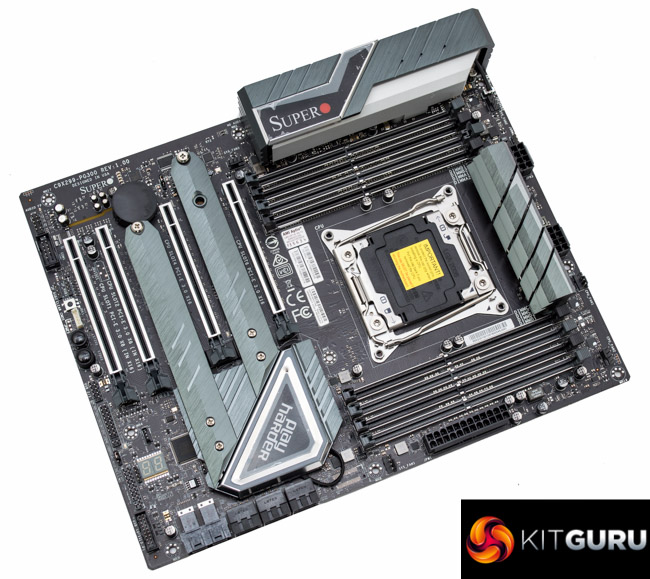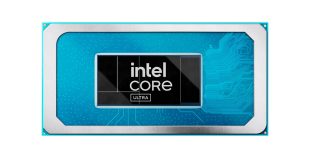There has been a significant amount of scrutiny placed upon the VRMs of motherboards since the VRM exposé of early X299 motherboards by professional overclocker der8auer. This lead to some manufacturers revising some motherboard's VRM designs and heatsinks to deal with shortcomings.
That VRM problem was largely exacerbated by Intel releasing higher core-count CPUs, peaking with the 18 core i9-7980XE, that required even more power to operate at high frequencies in order to compete with AMD's disruptive Threadripper platform.
The increased scrutiny of VRMs has spread to other platforms including AMD's AM4 and TR4 sockets and Intel's LGA 1151v2 socket – particularly where the motherboards are pitched towards gamers and support overclocking functions. Supermicro, then, is opening itself up to scrutiny with the SuperO C9X299-PG300 and its claims about “server quality”.
In our analysis it is hard to fault the Supermicro C9X299-PG300 and its VRM implementation that is based on high quality components across all the VRM areas – CPU VCore, VCCSA, VCCIO and memory. Given that the state of thermals is largely unknown and environment-dependent we'd still caution that Core i9 users running significant overclocks should pay attention to ensuring airflow over the VRM heatsink to prevent any long term issues on any X299 motherboard.

VRMs aside the Supermicro motherboard is an interesting proposition with 10 Gigabit Ethernet and dual M.2 slots both with cooling and 32Gbps of bandwidth. The inclusion of dual U.2 is novel and increases storage flexibility, but is perhaps nothing more than symbolic given the abysmal uptake of the U.2 standard across the industry by storage vendors.
There are a few more niggling issues with Supermicro's C9X299-PG300. For starters the mistake on the packaging and many of its online sources regarding the number of USB 3.1 ports was unfortunate, but Supermicro has taken sufficient measures to address this mistake. This motherboard does not have four USB 3.1 ports, it has 2, but that's insignificant as there are still few USB 3.1 devices capable of using the additional bandwidth provided by USB 3.1 over USB 3.0.
Another minor issue encountered related to the Supermicro SuperO Booster software having compatibility issues on our test system, though Supermicro promptly addressed this with a new version that is being finalised for customer release as this review is being written.
The generally average numbers of certain other connectors is also a little disappointing for a motherboard of this class. For instance, X299 supports 8 SATA ports direct from the chipset yet Supermicro has only implemented 6 of these and the M.2 ports do not make use of those spare SATA lanes to offer alternative SATA operating modes.
Similarly, USB could do with a couple more internal headers of type 2.0 and 3.0 to bolster connectivity options while the number of fan headers could also benefit from rising above the current 5 headers to keep up with rival motherboards in this class.
The Supermicro motherboard, despite its shortcomings, is a well-built motherboard that is “infused with server DNA”. Supermicro could still implement a number of improvements, but for the X299 buyer looking for a no-nonsense and high-quality motherboard with a strong VRM and useful connectivity – such as dual M.2 and 10 Gigabit LAN – the C9X299-PG300 is definitely a worthwhile consideration.
The Supermicro SuperO C9X299-PG300 is currently available to buy from Newegg in the USA for $349.99 with a 3 year warranty. There is currently no retail availability in the UK from any reputable retailer but Newegg does ship to the UK for £338.67 (shipping and taxes included). Supermicro informed KitGuru that it was currently negotiating with retail partners internationally to improve availability, so only time will tell if this effort is realised.
Pros:
- Excellent VRM components for the VCore, VCCIO, VCCSA and Memory
- Dual cooled M.2 and dual U.2
- SuperO Booster is a simple and useful unified software utility
- Onboard RGB LED lighting and two RGB headers
- Diagnostic code reader and onboard power/reset/clear CMOS buttons
- 10G and 1G Ethernet connections
Cons:
- M.2 ports do not support SATA mode
- Low number of USB headers (2), SATA ports (6) and fan headers (5)
- Limited global retail availability
- CMOS battery mount is clunky and comes loose
KitGuru says: A class-leading VRM implementation paired up with excellent PCIe storage options and 10G LAN make the Supermicro SuperO C9X299-PG300 an attractive proposition for demanding prosumers.
 KitGuru KitGuru.net – Tech News | Hardware News | Hardware Reviews | IOS | Mobile | Gaming | Graphics Cards
KitGuru KitGuru.net – Tech News | Hardware News | Hardware Reviews | IOS | Mobile | Gaming | Graphics Cards



